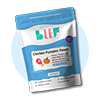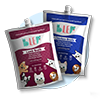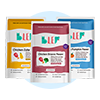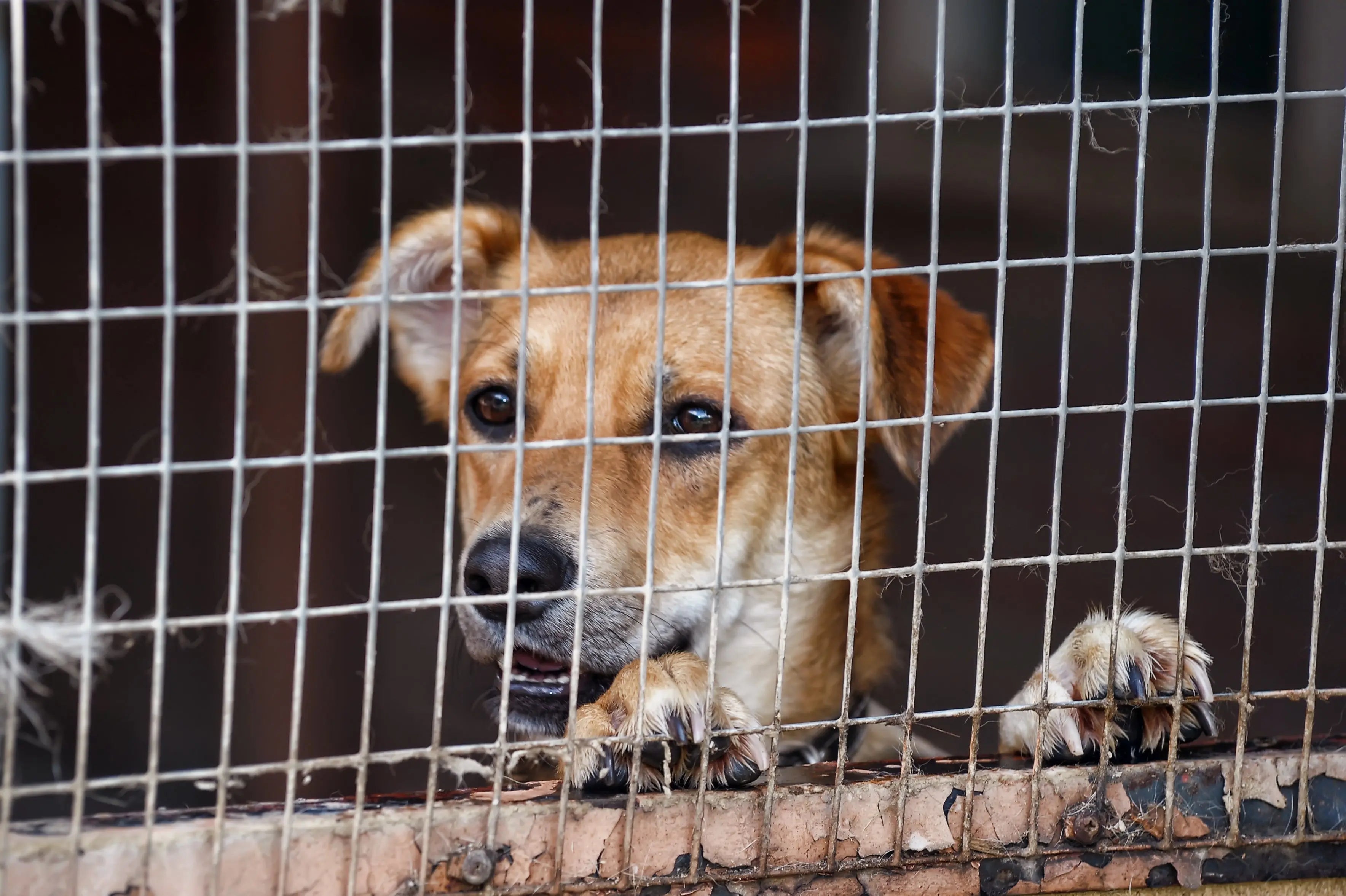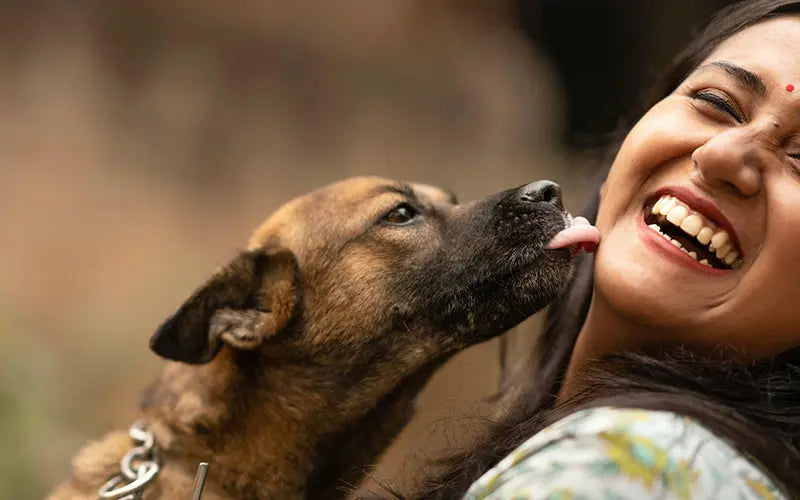Your pup licking away at a paw or their belly is nothing out of the ordinary. But then you see them doing it more and more often, and they seem to be getting rather obsessed with it: that’s when you should take a good look, because skin problems in dogs are one of the major reasons for such behaviour.
Dogs are known to be notoriously good at hiding pain. But it is most likely that they are not hiding it; their way of showing pain is just different from ours. So Pet Parents, especially new ones, pay close attention, because we’re about to talk about the most common skin problems in dogs. But first, a little on pain management in dogs.
How Do Dogs Show Pain?
Dogs were once hunting predators running around in packs in the wild. It may be so that your dearest pup fails to even hunt out their own tail nowadays, but some of those pack hunter instincts remain inside of them. So, showing weakness or injury is resisted by them because they can attract other predators or hamper their pack standing. The idea that showing vulnerability can be life-threatening has been hardwired into the minds of dogs over generations. So what can we do to identify pain markers in dogs? Here are some signs to look out for:
Behavioural:
-
They keep whimpering or moaning.
-
They don’t feel like eating.
-
They have become unexpectedly fearful or aggressive.
-
They are refusing to socialise.
-
They are restless and stressed.
Physical:
-
They don’t like being touched or moved.
-
They keep crouching or hiding.
-
Their pupils may widen.
-
They are biting or chewing a particular area of their body.

Symptoms of Skin Problems in Dogs
Even though some basic signs and behaviours are similar, essentially every dog reacts differently to different stimulants like pain, stress, and anxiety. So, observing your pup and their behaviour periodically will help you understand their specific expressions of distress. Check their coat, skin, ears, nose, and paws often so that you can catch anything unusual early. When it comes to skin problems in dogs specifically, there are a number of signs you need to watch out for:
-
Skin sores and lesions
-
Flaky, dry, or scaly skin
-
Lumps and bumps
-
Redness and rashes
-
Itchy spots
-
Excessive licking, scratching, or biting of a particular body part
-
Bald patches or hair loss
-
Inflamed skin
Common Skin Problems in Dogs
Allergic Dermatitis
This is one of the most common skin problems in dogs and can be caused by environmental or food allergies. Environmentally, new grooming products, dust, pollen, insect bites, etc., are some common triggers. Wheat, soy, and certain proteins in the diet may also cause allergic dermatitis in dogs.
Symptoms: Excessive scratching or licking, excessive redness of skin, inflammation, and periodic ear infections are some indicators of allergic dermatitis.
Treatment Tip: Corticosteroids or other anti-allergy medication may help, but always consult your vet before giving any drugs to your pup. Apart from that, identifying and eliminating the original trigger/triggers for the allergic reaction is also very important to prevent long-term problems.
Yeast Infection
Yeast infections usually target the ears and paws of a dog because yeast thrive in moist and cosy corners of the body. Typically, yeast infections occur due to the overgrowth of the fungus, Malassezia pachydermatis, which lives on the skin. However, when there are hormonal imbalances or a weakened immune system, the fungus starts spreading and causing skin problems in dogs.
Symptoms: If your dog starts scratching their ears and licking and chewing on their paws excessively, it is usually a yeast infection. It can also be accompanied by inflammation, greasy discharge, and odour.
Treatment Tip: Topical creams are usually useful for yeast infection but infections usually take weeks to heal. The vet may also prescribe oral medication, medicated sprays, or medicated baths. Apart from that, identifying and treating the underlying causes, such as a suppressed immunity, is also important for full recovery. Meanwhile, frequent grooming should be done to keep the skin clean.
Folliculitis
Superficial folliculitis is a skin problem in dogs that can be hard to notice in long-haired breeds. It is essentially an infection that causes inflammation in the hair follicles on the skin. Staphylococcus pseudintermedius is the bacteria that is most commonly associated with bacterial folliculitis. Usually, folliculitis will occur alongside other skin issues, such as mange, allergies, or injury.
Symptoms: In short-haired breeds, it is easy to see the sores, bumps, and scabs on the skin that are caused by the disease. However, long-hairded dogs may show different symptoms, as it is not easy to see their skin — they may start shedding a lot, have a dull coat, and get scaly skin.
Treatment Tip: It is one of the more common skin issues in dogs. Topical treatments may help reduce discomfort, while the vet may prescribe oral antibiotics, antibacterial ointments, or treatment shampoos to target the bacteria.
Impetigo
This is a bacterial infection that usually affects puppies. The disease causes lesions on the skin, especially in the hairless parts of a puppy’s body, such as the abdomen. It is non-contagious and is caused by coagulase-positive staphylococci bacteria due to poor hygiene conditions in the puppy’s environment. Impetigo rarely turns into a serious problem, but because it targets puppies, it is best to get it treated as quickly as possible.
Symptoms: Impetigo shows up in the form of blisters that are pus-filled, and they scab over after they burst.
Treatment Tip: Impetigo is treated with treatment washes, topical solutions, and antibiotics.
Seborrhea
In Seborrhea, there is an excessive production of an oily substance called sebum, which is secreted from the skin’s glands. The areas of the body that are most affected by this condition are the toes, the belly, the skin under the dog’s tail, under the armpits, and the bottom of the neck. The skin issue in dogs may also be genetic and long-term.
Symptoms: Dogs may get flaky or greasy skin and thick, crusty patches, usually accompanied by a bad odour. Other characteristics can be dandruff, redness, itching, and shedding.
Treatment: The affected areas must be kept clean at all times. Medicated shampoos and baths can help treat the condition, and topical creams may remove the excess oil and scale. Dietary changes can also help.
Ringworm
Ringworm is actually a disease that is caused by a fungus, but it gets its name from the typical round, red rings that the infection causes. Ringworm usually occurs most in puppies who are less than a year old. This is a zoonotic disease, so it can pass on to humans and can spread very quickly between both dogs and humans.
Symptoms: The most common symptom of ringworm is the round, inflamed patches of skin that can be found on a puppy’s head, paws, ears, forelegs, etc. The lesions are surrounded by scaly patches and hair loss. The sites of infection may also be very itchy.
Treatment Tip: Ringworm infections need topical and oral antifungal treatment and medication.
Alopecia
Alopecia is a condition that causes unusual hair loss in dogs. It may be indicative of a number of health issues, such as allergies, hormonal imbalances, autoimmune diseases, parasites, and others. Some dogs, especially the ones with dense undercoats like Pomeranians, Chow Chows, and Alaskan Malamutes, may develop a genetic type of alopecia called alopecia X.
Symptoms: Alopecia is characterised by the loss of an unusually large amount of hair in dogs, some even getting bald patches. This may be accompanied by irritation or itchiness of skin. Alopecia X may occur without any skin inflammation.
Treatment Tip: The underlying cause of this skin problem in dogs must be identified and treated, as that is usually the origin of this disease. Adopting dietary changes, certain supplements, and paying more attention to grooming are also helpful. In alopecia X, neutering male dogs may improve the condition, and melatonin is also seen to help.

Mange
This skin disorder is caused when tiny parasites called mites start infesting the hair follicles and skin of dogs. Mange is of two types — sarcoptic mange, sometimes called canine scabies, and demodectic mange. Sarcoptic mange can spread very quickly between dogs and even get on to humans, although the mites don’t last very long on human skin. Infection is caused by Sarcoptes scabiei mites. Demodectic mange is caused by Demodex mites and is non-contagious. Contaminated environments can facilitate the quick spreading of mites.
Symptoms: Sarcoptic mange symptoms include itching, inflamed skin, sores, pustules, and hair loss. Demodectic mange is characterised by bald spots, scabbing, and sores. The usual areas of infection are a dog’s ears, face, around the eyes, and legs.
Treatment Tips: The treatment for mange, first and foremost, is to maintain very good hygiene and grooming. Topical or oral medications are usually given to kill mites. Vets may also prescribe other medicines and medicated baths to control symptoms.
Acral Lick Granuloma
This skin problem in dogs is caused by the compulsive licking of a particular area by the dog. This area is usually the front surface of one or multiple legs. This can become a chronic condition, since the dog keeps licking the same area and doesn’t give it time to heal. Sometimes, these open wounds can get infected, causing a secondary infection. This kind of behaviour is often caused by allergies or psychological issues, such as stress and anxiety.
Symptoms: Dogs with acral lick granuloma get skin lesions or nodules that are inflamed, raised, hairless, wet to the touch, and ulcerated. Pain and itching are also present, which makes the dog lick the patch more and makes it even more difficult to heal.
Treatment Tip: The most important thing is to make sure the dog stops licking the patch, either with a bad-tasting solution or a collar that keeps the area away from the dog’s mouth. Apart from that, tackling the underlying cause is also important. If it’s stress-related, the dog should be seen by an animal behaviourist. If the cause is allergies, then that must be treated. Medications and topical creams may also be prescribed by the vet.
Hot Spots
Hot spots are a painful condition in dogs, usually caused by self-trauma, such as excessive scratching, chewing, biting, or licking of a particular area. There may be many causes for this — allergies, stress, parasites, contact irritants, etc. These hot spots often lead to skin inflammation and secondary infections. Because the area is always irritated, it may turn into a cyclic infection as the dog keeps licking and biting it.
Symptoms: Hot spots, or acute moist dermatitis, show up as raised and inflamed patches of skin without any hair that are hot to the touch and may secrete pus or fluid. They are usually found on a dog’s chest, hips, head, etc., and may lead the surrounding area to become sticky or crusty. These areas are very painful and itchy.
Treatment Tip: The most important treatment tip is to keep the dog from licking the area further to minimise trauma. This can be done by using a cone collar. Apart from that, the area must be kept clean and well-groomed to ensure that no further infection takes place. The vet may prescribe topical creams and medicated baths to alleviate the irritation. Further treatment will depend on the underlying cause, whether behavioural or due to allergies or parasites.
Lupus
Lupus is an autoimmune disease, which means that the body starts attacking itself because of a dysfunctional immune system. Lupus can be hard to diagnose because it most often attacks the insides first and then slowly shows up as external symptoms. It is a very serious condition in dogs and can be life-threatening. There are two kinds — discoid lupus erythematosus (DLE), which mainly affects the skin, and systemic lupus erythematosus (SLE), which affects the entire body of the dog.
Symptoms: Symptoms include lesions, scaly skin, and hair loss, especially around the eyes, paws, and nose of the dog. However, symptoms can be varied depending on the kind of lupus, and can range from anaemia, lethargy, poor appetite, and weight loss to badly affected internal organs like the kidneys, the brain, and even muscles.
Treatment Tip: The most important thing is to consult a vet immediately if you suspect lupus. The treatment usually includes immunosuppressive drugs to deal with the abnormal hormonal responses. Corticosteroids and Vitamin E supplements are sometimes used for this. Apart from that, dietary modifications can also help with the immune system overall, like adding antioxidants like Vitamin A, Vitamin C, and Beta-Carotene.
Anal Sac Disease
Dogs have two small pouches on the sides of their anus that hold an odorous, dark fluid that they use to mark their territory and identify each other. Usually, this fluid is expelled from the sacs when dogs poop due to the pressure on the sacs, but sometimes, this fluid could thicken and clog the pores from where the secretion comes out. This is called impaction. If left unattended, this can get infected and ultimately turn into an abscess, which needs surgical intervention.
Symptoms: The most common signs of a dog with anal sac disease are when they start scooting their butt on the ground, licking or biting the area around their anus, have a bad smell on them, or have constipation or pain when pooping or sitting. In severe cases, the sacs may get swollen and ooze pus or blood.
Treatment Tip: The vet may manually push out the clogged fluid from the sacs, wash them out, and give some antibiotics. If there’s an abscess, the vet may need to open it surgically and drain it. After that, your dog will be given antibiotics and anti-inflammatory drugs. Daily warm compresses may also be recommended. In advanced cases, the sacs may have to be surgically removed.

Skin problems may appear minor, but they can progress in severity or even be symptoms of larger internal problems. So, even if it's a small issue, it is best to consult a veterinarian to be sure of the diagnosis.
For a healthy boost to skin health and immunity, you can try out our delicious and collagen-packed selection of broths. They come in two variants - Chicken Bone Broth and Lamb Bone Broth.
Looking to explore more healthy treats and care tips for your furry friend? Check out our other guides like Can Dogs Eat Apples?, Can Dogs Eat Blueberries?, Why Do Dogs Licks You?, Can Dogs Eat Strawberries?, Can dogs Eat Mango?, Dog Food for Weight Loss, Raw v/s cooked meat for dogs, Home Remedies to cure tick fever, Finding Good Dog Food in India, How many times should I feed my dog?, Things you should do to keep your pet healthy, Types of Dog Food, and How Prebiotics and Probiotics can improve your dog's digestion. Each guide is designed to help you make better food choices for your dog because the right diet is what gives you a happy and thriving pup.
Resources:

